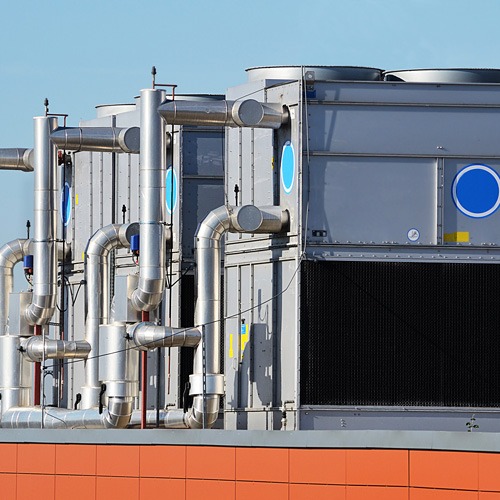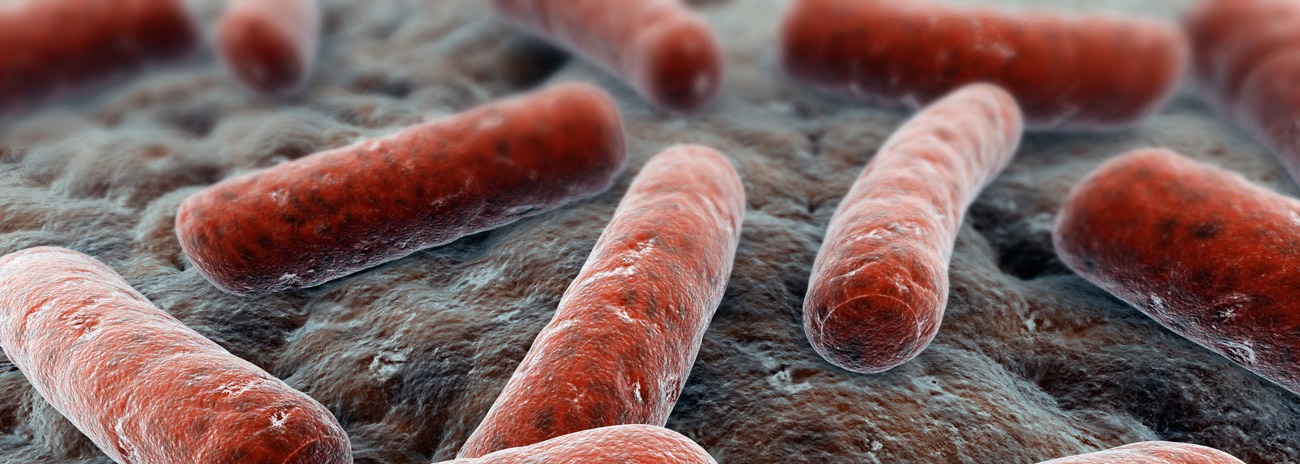Severe Acute Respiratory Syndrome (SARS)
What is SARS?
Severe acute respiratory syndrome (SARS) is the term being used to describe a new serious respiratory illness that emerged from South-East Asia in 2003.
How many people have been affected?
SARS has killed more than 750 people and infected over 8,400 worldwide since it surfaced in southern China late in 2002. Four cases of probable SARS were reported in the UK, with one person testing positive for the causative agent, the coronavirus.The Health Protection Agency website gives up-to-date information on the number of cases worldwide and in the UK.
What causes SARS?
The causative agent has been identified as a coronavirus, although it is possible other infectious agents are associated with some cases. The World Health Organization (WHO) is investigating the suggestion that the virus is of animal origin, from domestic or wild animals (possibly used as food) located in Guangdong Province (in South China).
Do you have other general questions about SARS that are not work-related?
The Department of Health is responsible for public health, and they have already issued guidance via their own website and that of the Health Protection Agency – https://www.hpa.org.uk/infections/topics_az/SARS/menu.htm and https://www.hpa.org.uk/infections/topics_az/SARS/FAQs.htm. These websites should provide answers to any general questions you have.
How is the agent that causes SARS classified under COSHH?
The SARS Working Group of the Advisory Committee on Dangerous Pathogens (ACDP) has considered the appropriate hazard grouping for the SARS agent. They have agreed the agent should be classified as Hazard Group (HG) 3 but stressed the need to review this classification once further information becomes available, for example:
- Treatment: The development of possible immunoglobulin therapy (currently underway in Hong Kong) and information on the viral burden (whether it peaks early or late during infection)
- Infection: Further information on the viral load, burden and titre required for infection to occur.
- Further information about the routes of infection.
Any employer doing a risk assessment for work with the agent should use this classification information. The ACoP and guidance* accompanying the Control of Substances Hazardous to Health (COSHH) Regulations 2002 gives further guidance on assessing the risks of working with hazardous substances.
* Control of Substances Hazardous to Health (Fourth edition). The Control of Substances Hazardous to Health Regulations 2002. Approved Code of Practice and Guidance (L5)
What advice does HSE have for health care workers?
HSE has the following advice, which complements that provided by the Health Protection Agency (formerly issued by the Public Health Laboratory Service).
If a patient fitting the definition for a suspect or probable case of SARS is admitted to the hospital, clinicians should notify infection control personnel immediately. A risk assessment must be done for all work with the person who has suspect or probable SARS, and appropriate control measures put in place to reduce the risk of any healthcare worker who comes into contact with the patient being exposed to the SARS virus. Until the cause and route of transmission are known, in addition to standard precautions (sometimes known as universal precautions), infection control measures for inpatients should include:
- Airborne precautions, eg
Either an isolation room with negative pressure relative to the surrounding area or a single room with own bathroom facilities, and
Use of FFP3 filtering masks conforming to EN 149:2001 for persons entering the room. This equipment must be face-fit tested before use
- Contact precautions (including use of long sleeve fluid repellent gown and latex or similar non-latex gloves with tight fitting cuffs for contact with the patient or their environment).
- Standard (universal) precautions including careful attention to hand hygiene.
- When caring for suspected or probable SARS cases, healthcare workers should wear eye protection for all patient contact.
- Standard (universal) precautions when handling any clinical waste, which must be place in leak-proof biohazard bags or containers and disposed of safely.
- Laundry should be classified as infected.
- If hospitals lack isolation facilities and lots of cases occur, then cohort nursing is recommended as per WHO guidelines.
- Long sleeve fluid repellent gowns and latex or similar non-latex gloves with tight fitting cuffs should be worn by all persons entering the room of a suspect or probable SARS case (until more is known about transmissibility).
- It is not necessary to use disposable crockery or cutlery when caring for suspect or probable SARS cases in hospital.
- Hypochlorite is the recommended disinfectant for environmental decontamination of areas where the suspect or probable SARS case has been in the hospital (e.g., A&E department).
(This information is also consistent with the guidance provided by WHO.)
The Department of Health has also issued some guidance for HCWs (see https://www.hpa.org.uk /infections/topics_az/SARS/Guidelines.htm), which covers managing SARS cases, sampling suspected individuals, infection control etc.
What advice does HSE have for laboratory workers?
ACDP has classified the SARS agent as HG3 (see question 5). Those who intend to work with SARS should use this classification information as part of a full risk assessment, taking into account the activities to be performed.
In addition to the prevention and/or control measures you decide to take/use as a result of the risk assessment you should consider the following advice:
- Laboratories intending to undertake work involving deliberate propagation of the SARS agent are required by COSHH to notify HSE in the normal way before the commencement of work (the COSHH ACoP provides more information about the notification process. The Biological Agents Bulletin has current guidance on the notification process). Work must be carried out at full Containment Level 3 (CL3).
- It is suggested that specimens intended for microbiological examination is taken from cases of probable and suspect SARS are handled at CL3. Such specimens might include nasopharyngeal aspirates, nasal washes, combined nose and throat swabs, bronchoalveolar lavages and sputa for viral and bacteriological analysis. If the local laboratory does not have operational CL3 facilities then such samples should be forwarded directly to a nearby laboratory with appropriate facilities. Where an illness is retrospectively identified as probable or suspect, any remaining samples should be transferred to CL3. After reviewing existing results and available samples, further local investigation and/or transfer of material to national reference laboratories may be indicated.
- Clinical specimens from probable and suspect SARS patients required for pathology management tests (i.e., those normally undertaken in haematology or biochemistry laboratories) should be subject to a common high standard of handling (i.e., that applicable to HIV/hepatitis or other blood-borne pathogens). Such specimens may be processed at CL2 and may be labelled ‘HIGH RISK’.
- The WHO has advised that the virus loses infectivity after exposure to different commonly used disinfectants and fixatives. However, if the virus is being fixed onto glass slides for immunofluorescence assays the acetone must be cooled to –20oC to eliminate infectivity.
The ACDP has issued further guidance to clarify the containment measures required for particular types of work with the SARS agent in order to assist dutyholders in complying with the requirements of Regulation 7(1) of COSHH:
- Routine diagnostic work with respiratory samples: In the absence of a worldwide SARS alert or confirmed case(s) of the disease in the UK, routine diagnostic work with respiratory samples should follow current guidelines. This should include an assessment of aerosol risk and, if appropriate, the use of a safety cabinet as well as other necessary containment measures.
- Work with diagnostic respiratory samples likely to contain the SARS agent: In the event of a worldwide alert or confirmed SARS case in the UK, propagation techniques must not be used for viral diagnostic purposes. Inactivated samples must be used for diagnostic work in a CL3 environment. Even if workers are looking for other organisms, the SARS virus could be inadvertently cultured. Tests may be conducted on inactivated samples in regional laboratories, and a sample should be sent to HPA Colindale to confirm the SARS diagnosis.
- Handling of non-respiratory samples in the event of an outbreak, any confirmed or suspected SARS faecal and urine samples should be handled in a CL3 environment, and virus and cell culturing techniques should not be used.
- Propagation of the virus (including research) As a HG3 agent SARS work must be done at CL3. A Class III cabinet should also be used during propagation procedures, as such work could potentially create frothing effects, with very high risk of aerosols being produced. Additional reasons for the use of Class III cabinets includes: the high titre of virus worked with during propagation;
the additional containment afforded by the use of an enclosed safety cabinet.
the potential for gross contamination if there was a spillage from a Class I cabinet; and
the severity of release of the virus into the community.
Work with animal models: All work with animals and the SARS agent should conform to existing primary containment procedures.
- Large Scale work: Work with the SARS agent (in quantities over ten litres) should be notified to the HSE, who will make recommendations on containment accordingly.
- Post Mortems: For purposes of diagnosis limited PM’s may be conducted using the approach for high-risk procedures outlined in HSAC guidance (Safe working and the prevention of infection in the mortuary and post-mortem room ), It is not recommended that PM’s are undertaken for other purposes.
What advice does HSE have for education establishments taking in students who have travelled from abroad?
The Health Protection Agency has already produced guidance for schools and other educational institutions that have large numbers of students who have travelled to risk areas or who have been in contact with those who have –https://www.hpa.org.uk/infections/topics_az/SARS/travel.htm, which should cover any queries you have.
You are only at risk from SARS if in close contact with someone who has the disease, and under normal teaching circumstances this type of exposure is unlikely.
However, some employees e.g. school nurses, may be at higher risk if during the course of their normal work they have close contact with infectious people. An employer should already have carried out a COSHH risk assessment that takes into account potential exposure to biological agents in general – and put preventative measures or controls in place as appropriate. We recommend that employers review these risk assessments in light of information currently available on SARS (see question 9) and amend their assessment and measures required to control the risk appropriately.
In exceptional circumstances employees may be sharing quarantine with students returning from SARS affected areas. We recommend, as best practice, that their employers carry out a risk assessment using the criteria above.
For further guidance on case and contact management see:https://www.hpa.org.uk/infections/topics_az/SARS/menu.htm
What advice does HSE have for other employers/employees concerned about exposure to SARS at work?
HSE does not have the remit to provide advice to the general public about their risk of being exposed to SARS, so you need to refer to the The Department of Health https://www.doh.gov.uk/traveladvice/emerg.htm and Health Protection Agency https://www.hpa.org.uk/infections/topics_az/SARS/menu.htm guidance for more information.
It has been suggested that there is a potential for workers (in addition to health care workers (HCWs) and laboratory staff) to be exposed to the SARS agent as they come into contact with infectious members of the public, eg immigration officials in airports, customs staff at docks.
An individual is only at risk from SARS if they are in close contact with someone who has the disease or the body fluids from infectious individuals. Therefore, employees with the highest risk of exposure will be HCWs and those handling infected clinical samples (as well as people intentionally working with the SARS agent) – advice for these workers is covered in questions 6 and 7.
COSHH should also be applied for workers (such as cleaners on aircraft, custom officials conducting intimate body searches) who come into contact with human body excretions/secretions that could contain any infectious agent. Where there is direct contact with such infectious people (or excretions/secretions) employers should already have carried out a risk assessment and put preventative measures or controls in place as appropriate. We recommend that employers review these risk assessments in light of the information currently available on SARS, eg.
the hazard group classification;
- the likelihood of having close contact with infectious individuals (ie close [family] contacts or health care workers giving direct patient care);
- the route of infection (by exposure to droplets or body fluids);
- and amend their assessment and measures required to control the risk appropriately.
Further advice on conducting a risk assessment, prevention or control measures etc can be found in the COSHH ACoP (see question 5 for details of this guidance document).
What if a member of staff is returning from a SARS-affected area?
There is no evidence that symptomless people returning from SARS-affected areas should be excluded from the work place. However, an individual who has returned from such an area should remain vigilant about their own health for 10 days after they return. If during this time they develop suspicious symptoms (eg high fever accompanied by cough, shortness of breath or difficulty breathing) they should seek immediate medical attention.
What if I have been sent goods from a SARS-affected area?
The WHO concluded that “goods, products or animals arriving from SARS-affected areas [do not] pose a risk to public health”. HSE, therefore, advises that there is no need to quarantine goods etc from a SARS-affected area that are being brought into the work place.
Updated 05.03.04 – Crown copyright – material is reproduced with the permission of the Controller of HMSO and the Queen’s Printer for Scotland.






